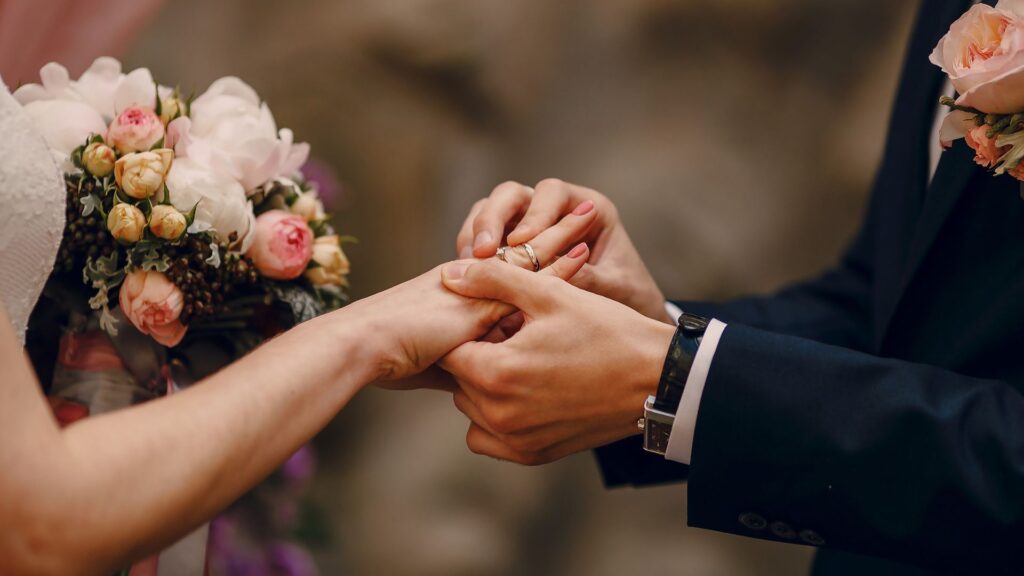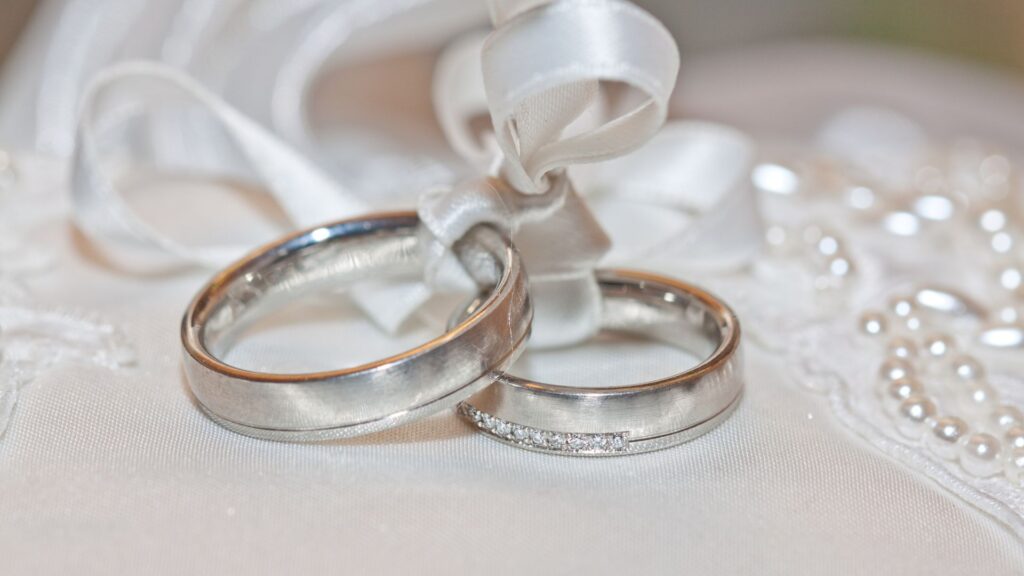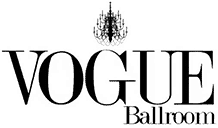When it comes to wedding rings, the tradition of wearing them on the left hand is widely known, but did you know that in many cultures, the right hand holds just as much significance? Whether it’s rooted in cultural beliefs, personal symbolism, or practical reasons, wearing a wedding ring on the right hand can hold deep meaning for couples. In this guide, we’ll explore the reasons behind this choice, from ancient traditions to modern interpretations, and share insights on how the right hand can be just as symbolic of love, commitment, and unity as the left.
The Left-Hand Tradition: Why Most People Wear Wedding Rings On Their Left Hand
The Ancient Egyptian Connection to the Left Hand
When I was planning my own wedding, I remember diving into the history of wedding rings, trying to figure out which finger and hand would be the right choice. I had always known about the tradition of wearing a wedding ring on the left hand, especially when I got engaged at Vogue Ballroom. But did you know the tradition actually dates back more than 5,000 years? That’s right—Ancient Egypt is where we can trace the roots of this custom.
Back then, Egyptians believed that the ring finger of the left hand contained the “vena amoris” or “vein of love,” a direct link to the heart. While we now know that all fingers have veins running to the heart (and no single vein is reserved for love), this belief is still deeply ingrained in Western culture. It’s a lovely romantic notion, right? And it stuck around through the Roman Empire, influencing the way we see marriage today.
This connection between the left hand and love isn’t just about a physical vein, though. It’s also about symbolism—the belief that wearing a wedding ring on the left hand connected the person to their partner in the most intimate and spiritual way possible. So, for many, wearing a wedding ring on the left hand is more than just tradition; it’s an enduring symbol of the bond between two people.
The “Vena Amoris” and Its Influence on Western Customs
When I first learned about the “vena amoris” in my research, I couldn’t help but laugh at how a simple belief from the ancient world has shaped modern weddings. But it made sense—this vein from the left hand to the heart was an easy way to show deep affection and commitment, and the idea was so powerful that it stuck for millennia.
You see, this little vein became a crucial part of the wedding ring tradition, especially in Western cultures. It’s why we still wear our wedding rings on the left hand. Even in Australia, most couples still follow this practice. I’ve helped many couples choose their rings at Vogue Ballroom, and nearly every one of them decided to wear their wedding bands on the left hand. It’s comforting to think that such a deep-rooted custom connects you to the same history and meaning that’s been passed down for generations.
Why the Right Hand? The Cultural and Religious Significance Behind This Choice
Orthodox Christianity and the Right-Hand Tradition
So, if the left hand is so historically rich with symbolism, why do some people wear their wedding rings on the right hand? Well, let me take you back to one of the most fascinating parts of my wedding planning journey—learning about different cultural traditions. I was amazed to discover how the right hand is just as significant in certain religious traditions.
In Orthodox Christianity, for example, wedding rings are traditionally worn on the right hand. This is particularly common in countries like Russia, Greece, and other parts of Eastern Europe. For Orthodox Christians, the right hand is seen as the more sacred and honourable of the two hands. It’s all tied to the concept of authority, virtue, and strength. This was something I had never considered when I was thinking about where to wear my wedding ring.
During the traditional Orthodox wedding ceremony, the priest places the wedding rings on the right hands of the couple. This reflects the belief that the right hand represents goodness and divine approval, which I think is a beautiful and meaningful tradition. It was one of those eye-opening moments for me, where I realised just how varied wedding ring customs are around the world. If you’re planning a wedding with Orthodox traditions, you may very well follow this path.
Jewish Wedding Traditions: The Right Hand’s Role
The Jewish wedding ceremony offers another interesting perspective on wearing a wedding ring on the right hand. In many Jewish traditions, the wedding ring is initially placed on the index finger of the right hand during the ceremony. This is particularly meaningful in the Jewish faith, as the right hand holds significant spiritual importance. The index finger itself is considered to be the closest to the heart, and in some cases, after the ceremony, the ring is moved to the left hand.
It’s fascinating to me that in Jewish culture, the right hand is often chosen for the initial symbolism of commitment, before the couple moves it to the left. I remember one couple I worked with in Melbourne, where the bride, who was of Jewish descent, insisted on having the ring placed on her right hand first. It added a layer of tradition and meaning to their ceremony that I hadn’t expected.
Wedding Rings on the Right Hand Around the World
As I was diving deeper into this topic, I found that the right-hand tradition isn’t just limited to religious customs. In many countries across the globe, the right hand is the traditional place for wedding rings.
- Germany is one such country where the engagement ring is worn on the left hand, but after marriage, it’s moved to the right hand.
- In Russia, Poland, Greece, and other Eastern European countries, the right hand is the preferred choice for wedding rings, with historical ties to Orthodox Christianity.
- India also has a unique take—while engagement rings may be worn on the left hand, wedding rings are often placed on the right, as the left hand is considered inauspicious for wearing ornaments like rings.
Even in Australia, I’ve noticed a small but growing trend of couples choosing to wear their wedding rings on the right hand. Some of my clients, especially those with European heritage, prefer this practice as a way to stay connected to their roots.
The Personal Significance of Wearing a Wedding Ring on the Right Hand
Symbolising Commitment and Loyalty: What the Right Hand Represents
As a wedding planner, I’ve seen firsthand how the right hand carries a deep personal meaning for couples. It’s not just a matter of following tradition—it’s a powerful choice that often reflects a couple’s unwavering commitment and loyalty to one another. This was something I really began to appreciate while working with one particular couple at Vogue Ballroom.
They chose to wear their wedding rings on their right hands, as a symbolic gesture of their commitment to building a partnership based on mutual respect and strength. The right hand, after all, is often associated with authority and trust in many cultures. For this couple, it wasn’t just about the symbolism of marriage—it was about making a statement that their relationship would be grounded in these qualities.
When you wear your wedding ring on the right hand, it can feel like a quiet yet powerful affirmation of loyalty, trust, and commitment. It’s a constant reminder of the vows exchanged, as well as the promise to honour and support one another. For this reason, many couples who wear their rings on the right hand see it as a way to express not only their connection but also their resolve to stand together, no matter what life throws their way.
Defying Tradition: A Personal Statement of Autonomy and Independence
In the midst of wedding planning, I also encountered couples who wanted their wedding ring placement to serve as a personal statement about their independence. One of my clients, a fiercely independent woman, opted to wear her wedding ring on her right hand as a way of expressing her autonomy. She wanted to make it clear that while she was deeply committed to her partner, she also cherished her personal freedom.
This concept of balance, where commitment and individuality coexist, is something that resonates with many couples today. I think it’s an excellent example of how wedding rings can have personal meanings that go beyond the conventional. The right hand, associated with strength and power in many cultures, provides a perfect canvas for this message of partnership without sacrificing personal identity.
It’s not uncommon for individuals in modern relationships to wear their wedding ring on the right hand as a way to embrace both their independence and their commitment. For some, it’s a deliberate departure from tradition, one that signifies their unique approach to marriage.
LGBTQ+ Pride and the Right Hand: Expressing Unique Identity
In addition to traditional cultural and personal reasons, there’s also a growing trend in the LGBTQ+ community to wear wedding rings on the right hand. For many in this community, the right hand becomes a symbol of unity, pride, and a celebration of love, free from traditional gender norms and expectations.
I worked with a couple recently at Vogue Ballroom who identified as part of the LGBTQ+ community. They chose to wear their wedding rings on the right hand, not just as a symbol of their marriage, but also as a way to challenge the traditional notions of wedding ring placement. For them, it was about asserting their love and identity in a way that felt authentic to them, rather than following a societal norm that didn’t fit.
This trend of wearing rings on the right hand allows people to embrace their unique love story while also creating space for self-expression. The right hand, traditionally associated with authority and strength, becomes a powerful tool for those in the LGBTQ+ community who wish to express their commitment in a way that feels true to them.
Practical and Personal Reasons for Choosing the Right Hand for Your Wedding Ring
Comfort and Practicality: Left-Handed People and Their Choice
When I got engaged, I didn’t think much about which hand I’d wear my ring on. But during my consultations with clients, I realised that for some people, the choice of hand is all about practicality. Particularly for left-handed individuals, wearing a wedding ring on the right hand can make a world of difference in terms of comfort and wearability.
Take Sarah and James, for example. Sarah is left-handed, and when we started discussing ring options, she mentioned how wearing rings on her left hand often felt uncomfortable, especially given her frequent use of her dominant hand. She was worried that the ring would get in the way of her daily tasks. So, Sarah and James decided to wear their wedding rings on their right hands. This simple change made a huge difference in her comfort level, and it also allowed her to protect the ring from getting scratched or damaged as easily.
For left-handed individuals, wearing a wedding ring on the right hand can simply feel more comfortable. If you’re constantly using your left hand, having a ring on it can be a nuisance, especially if you’re engaging in activities like typing, sports, or even cooking. By opting for the right hand, many left-handed people find that their rings are less likely to get in the way or get damaged, and the fit is just right.
Occupational Considerations: Does Your Job Affect Ring Placement?
I’ve worked with a number of clients in high-risk or manual-labour professions where the practicality of wearing a ring on the left hand simply doesn’t make sense. Take Mark, a construction worker I worked with a few years ago. Mark’s job required him to constantly use his hands, and he was worried that his wedding ring would catch on tools, or worse, get damaged.
For Mark, wearing his wedding ring on the right hand was a practical decision. It not only kept the ring safer from wear and tear, but it also allowed him to comfortably perform his duties without worrying about damaging the ring. Whether you’re a mechanic, chef, or even a hairdresser, wearing your wedding ring on your non-dominant hand can make your workday a lot easier.
Aesthetic Preferences: Why Some Choose the Right Hand for Style
I’ve also seen many couples make the decision to wear their wedding rings on the right hand purely for aesthetic reasons. A beautiful couple I worked with at Vogue Ballroom chose to wear their rings on the right hand because they felt it looked better that way. Their wedding rings were bold and intricate, and they thought that the right hand, with its slightly longer fingers, provided the perfect showcase for such statement rings.
For some, the choice to wear a wedding ring on the right hand comes down to personal taste—whether it’s for the way the ring looks, or how it complements their overall style. When you wear a statement ring, the right hand can often provide more space and visibility. It’s a simple yet effective way to make your wedding ring stand out, especially if you have an eye-catching design or are pairing it with other rings.
Personal Preference: There’s No “Right” or “Wrong” Way
At the end of the day, one of the most important reasons for wearing your wedding ring on the right hand is simply because it feels right to you. There’s no hard-and-fast rule about where to wear your ring, and that’s something I’ve always tried to emphasise when working with couples. Whether you choose the right hand for comfort, cultural reasons, or just because it feels more fitting for your relationship, the most important thing is that the ring represents the commitment and love you share.
It’s a personal choice that reflects your journey as a couple. And when it comes down to it, there’s no “wrong” way to wear your wedding ring. As I always tell my couples, it’s about what makes you feel most connected to the meaning behind the ring, regardless of which hand it’s on.
The Finger That Matters: Why the Ring Finger is Still Key
Why the Ring Finger Remains the Standard for Wedding Rings
Despite the growing trend of choosing which hand to wear a wedding ring on, there’s one thing that most people seem to agree on: the ring finger is the place to wear it. I’ve worked with many couples in Melbourne and beyond, and almost every one of them, regardless of whether they chose the left or right hand, opted to wear their wedding ring on the fourth finger.
But why the fourth finger? What’s so special about it?
Going back to my wedding planning experience, I had always assumed that the left ring finger was where a wedding ring belonged—after all, it’s the finger I had seen most often in Western culture. The explanation I found was surprisingly simple but also symbolic: the ring finger is the one most associated with love and commitment, whether it’s worn on the left or the right hand.
This finger has had a special significance across various cultures for centuries. In Ancient Egypt, as I mentioned before, it was believed that the vena amoris, or “vein of love,” ran directly from this finger to the heart. While we now know this vein doesn’t exist in the way they imagined, the symbolism remains strong. It’s not just about the heart but about the connection between two people, which is why the ring finger remains the universal choice.
What’s even more fascinating is that no matter where in the world you look—whether it’s in Western cultures or in countries where wedding rings are worn on the right hand—the fourth finger has stood the test of time. For example, when working with a couple from Russia, where rings are traditionally worn on the right hand, I was surprised to learn that the ring finger is still the chosen finger, even on the right hand.
The Right Hand or Left? The Personal Choice Behind Your Wedding Ring Placement
Embracing Personal Choice: No “Right” or “Wrong” Way
As we wrap up this exploration of why some people wear their wedding rings on the right hand, it’s important to remember one thing: there’s no universally “right” or “wrong” way to do it. Whether you wear your ring on the left or right hand, or even on a different finger, the most important thing is that your choice represents your personal commitment, love, and connection with your partner.
During my own wedding planning, I realised that this decision wasn’t just about following traditions or meeting expectations—it was about what felt authentic for us as a couple. For us, Vogue Ballroom was the perfect venue to reflect both our individualities and our shared commitment. When it came to the ring placement, we chose the left hand because it was a practice I had grown up with, but I always appreciated hearing the different reasons couples chose to wear their rings on the right hand. It reinforced the idea that every couple’s journey is unique.
Key Takeaways: What to Remember About Wearing Your Wedding Ring
- Cultural Influence: Many cultures associate the right hand with important symbolic meanings, including commitment, loyalty, and honour.
- Practical Reasons: Left-handed individuals, those with certain professions, or those seeking comfort often prefer wearing their rings on the right hand.
- Personal Meaning: Whether for symbolic reasons, cultural traditions, or personal comfort, the choice to wear a wedding ring on the right hand is a deeply personal one.
- The Ring Finger: Regardless of which hand you choose, the fourth finger, or ring finger, remains the universal place for wedding rings across cultures.
- No “Right” or “Wrong” Way: Ultimately, the hand and finger you choose should resonate with you and your partner, symbolising your unique love and commitment.
Let’s Get Straight to the Point
Wearing a wedding ring on the right hand is a meaningful choice for many couples around the world, often tied to cultural traditions, personal beliefs, or practical reasons. While the left hand is the traditional choice in many Western cultures, the right hand is favoured in Orthodox Christianity, parts of Eastern Europe, and among left-handed individuals or those in specific professions. Whether for symbolism, comfort, or personal style, choosing the right hand for your wedding ring is a deeply personal decision. Ultimately, the meaning behind the ring is what matters most, no matter where it’s worn.




